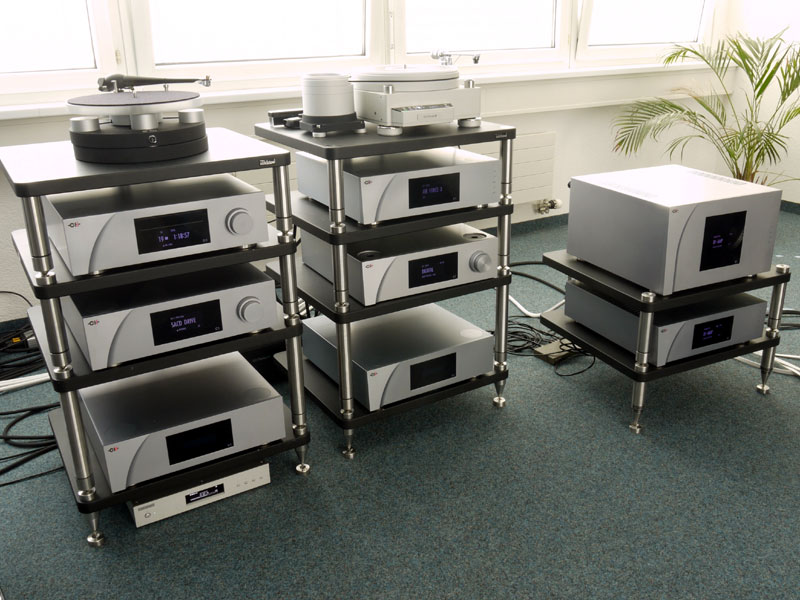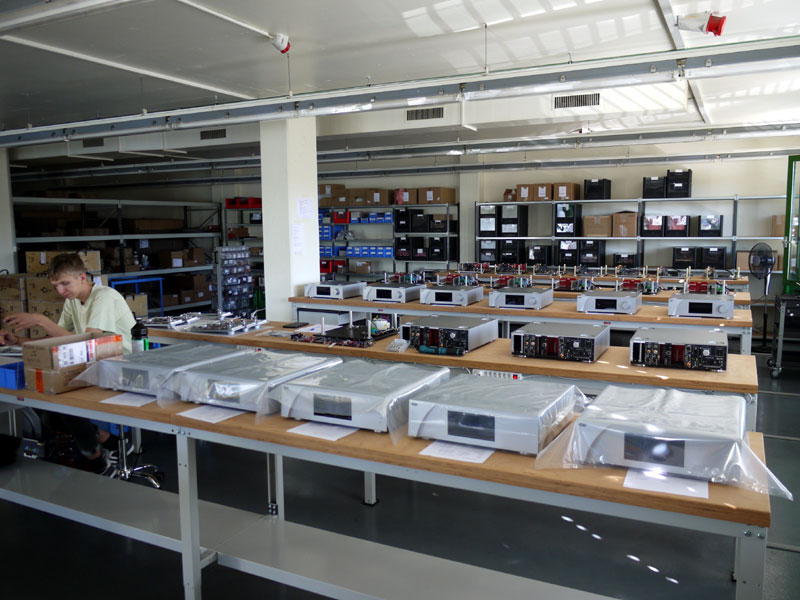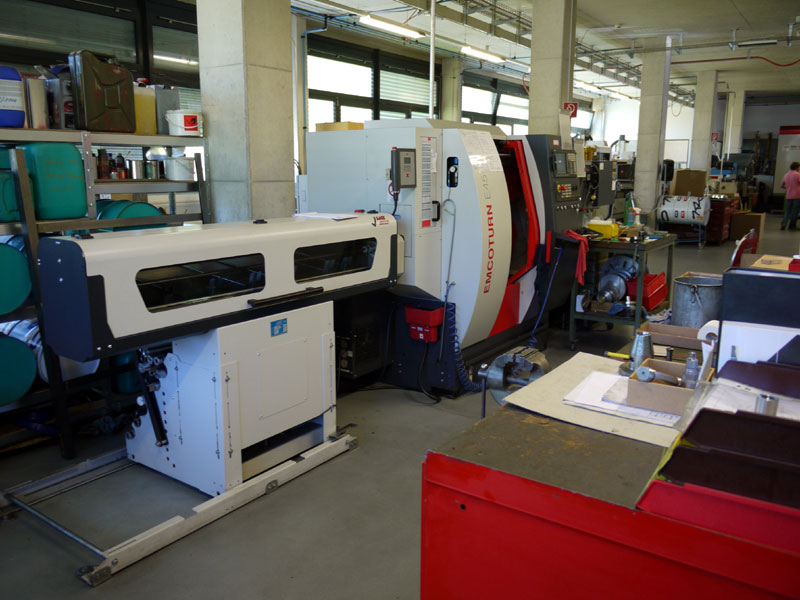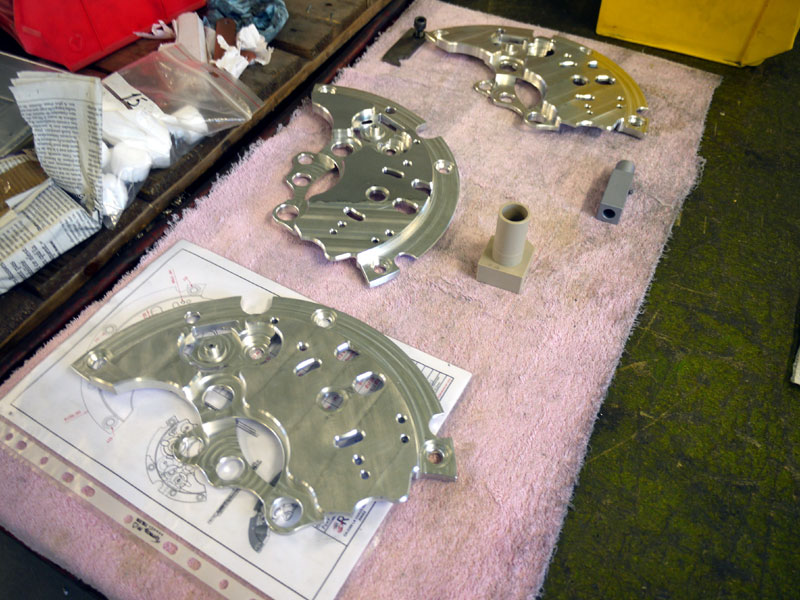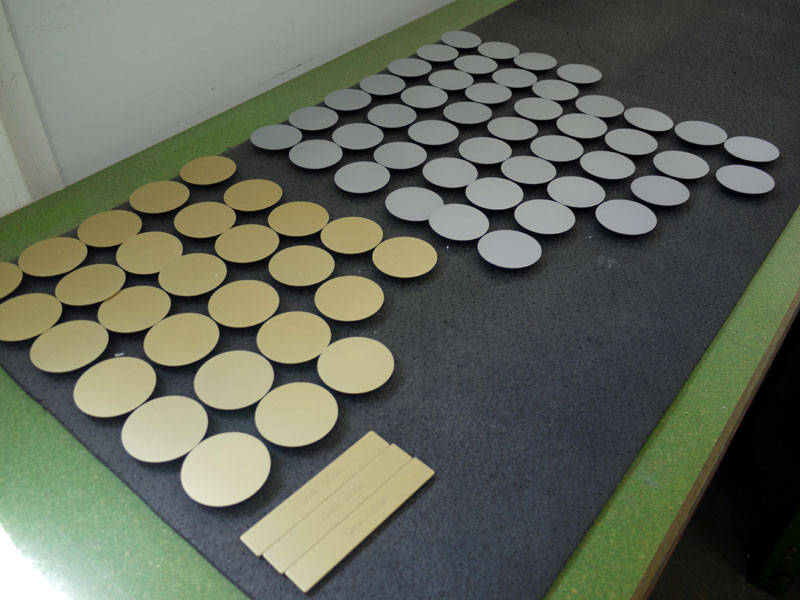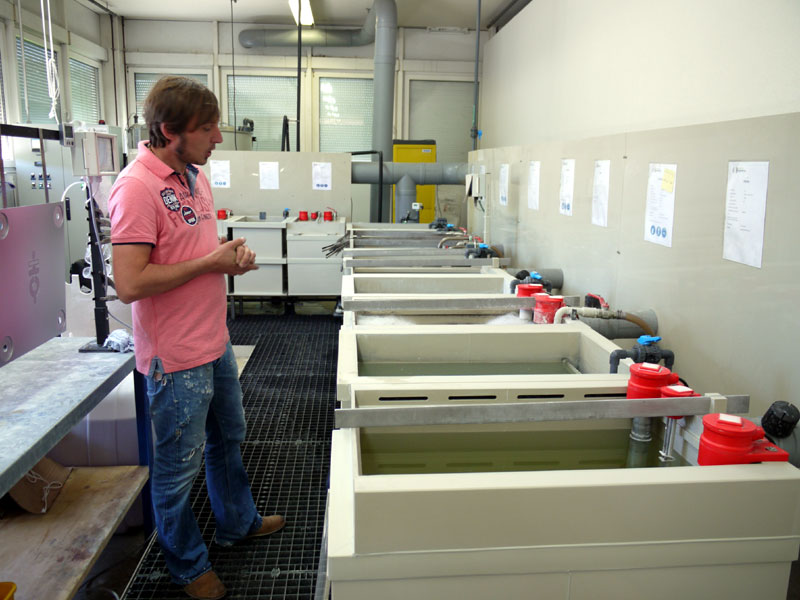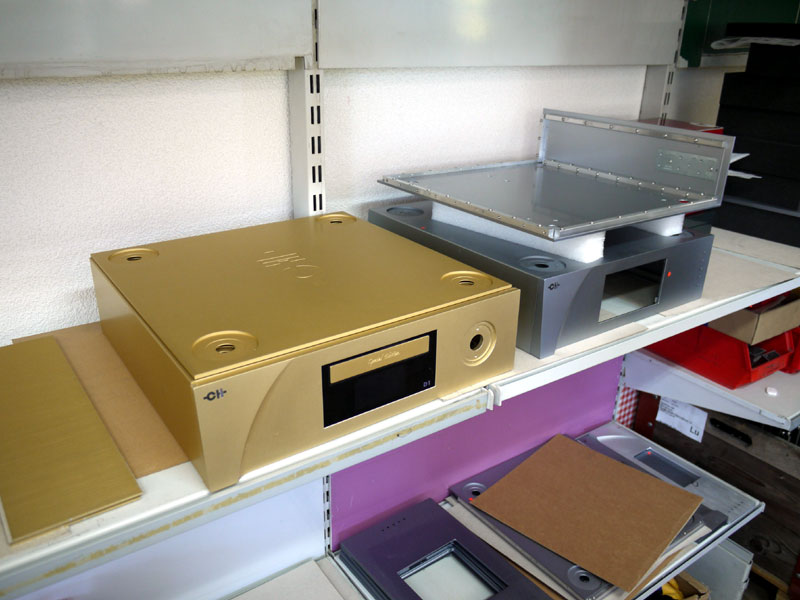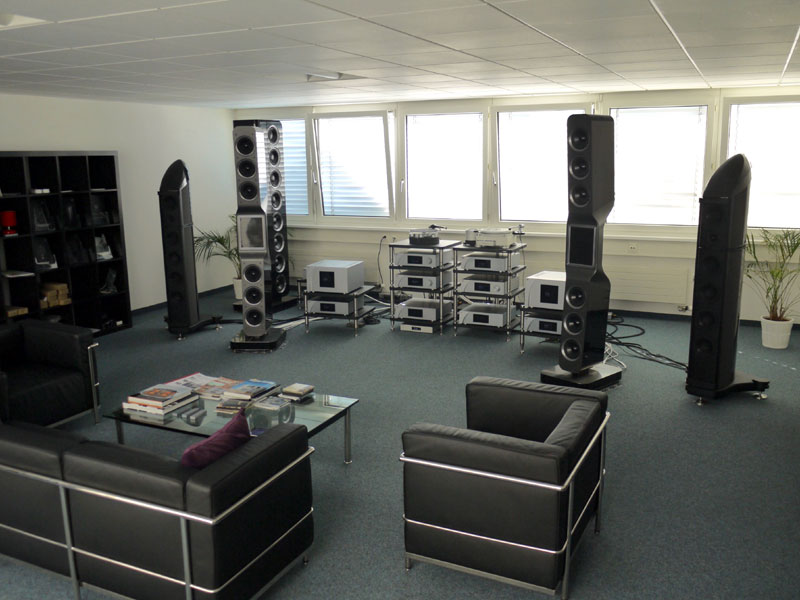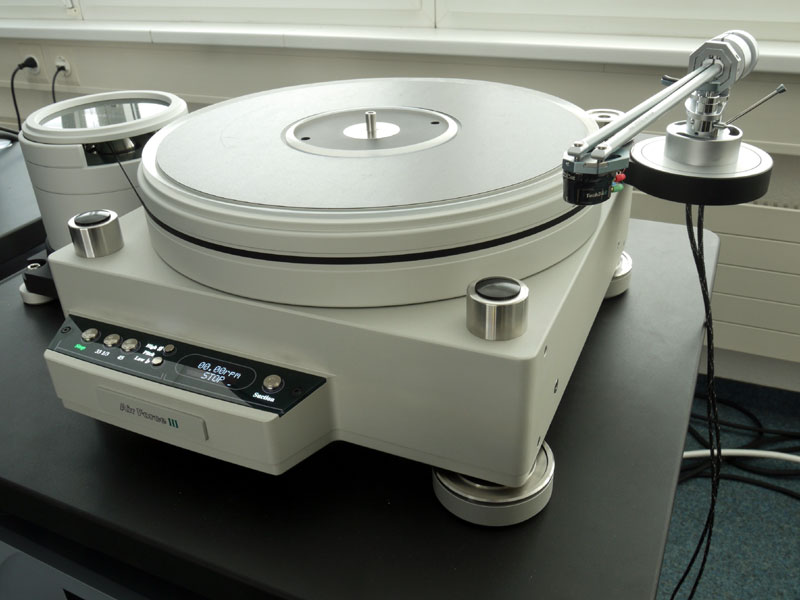Answering Questions Few Have Asked: CH Precision
Take any one of the CH Precision products, and the flawlessly finished case (almost indistinguishable between one model or function and another) offers no hint of the mind-boggling complexity of the circuitry it contains -- or the dead weight. Who else builds a phono stage that tips the scales at 44 pounds or a compact power amp with the same footprint and almost identical casework that weighs in at 95 pounds? There are few products as versatile, configurable or controllable as those from CH Precision, a company where even the power amps offer multiple menu levels to set all the available options and in which the individual channels of a stereo chassis can be independently and differentially configured -- if required.
Now, look at the range, which consists of: D1 CD/SACD player/transport ($38,000) Virtually all of these products offer the end user input and output options, meaning that just about every unit is built to order and the prices listed are merely starting points. It’s exactly the kind of logistical and manufacturing can of worms that a particularly optimistic management consultant might describe as "challenging" -- and from which most experienced audio manufacturers would run a mile. Now, consider this: despite the undeniable quality and complexity of the designs, the comprehensive product range and the organizational difficulties that always accompany what amounts to bespoke manufacturing, the entire CH line is the product of just seven people. That’s not seven designers -- it’s seven people total. Seven people who carry out everything from conceiving, designing and constructing the products, to handling the commercial necessities involved in parts supply, sales and shipping. That’s not just streamlined, it’s positively skeletal. And that to handle not just the existing products, but develop new ones too. You might well wonder how such a feat is possible; that it is possible tells you something about CH Precision and a lot about the Swiss -- at least the way industry works in Switzerland. If we start with the company itself, it was based on a functional division of labor, Florian Cossy being responsible for the physical design and layout of the products and Thierry Heeb developing the original computer code to actually control the extraordinary functionality that was at the core of the product concept. These days things have moved on, and Heeb, although still involved, has moved sideways into an advisory/overview role. That leaves Florian Cossy to oversee the combined efforts of his three-man design team, with individual responsibilities divided across electronic/circuit design, mechanical implementation and coding. Computer-aided design is hardly news, but the extent to which CH Precision leverages the technology is remarkable and to a large extent only possible because, despite discrete areas of responsibility and specific expertise, each member of the design team enjoys overlapping skill sets, making for a team appreciation of design challenges and the ability to redeploy effort as required. Each product starts as a four-way conversation, and the separate development elements run in parallel rather than series, with the three designers deploying their time and effort as required. That leaves three further employees unaccounted for. They make up the production team, with one person primarily concerned with oversight, inventory and shipping, leaving two to actually build the products. The company is located in adjacent facilities, with the office, design studio and listening room in one building, the almost clinically clean and tidy production space located next door.
Walk into the production area and the first things that confront you are ranks of assembly tables, with rows of partially assembled products, their identical blue-gray casework looking like a model Panzer division on parade. And when I say "identical," I really do mean identical. A key aspect of the CH Precision products is their configurability, for which they rely on a modular, card-cage design, meaning that the chassis, front panel and power supply can be common to more than one unit. This allows partial construction before a product’s identity is even established. Once that decision has been made, based on orders and stock requirements, those mechanical skeletons can be populated with the appropriate circuit boards and components. Units built to order can be completed, tested and packed, while those destined for stock will be left devoid of input/output modules so that these can quickly be fitted according to orders received. It’s a remarkably flexible and responsive process, but it depends on absolute consistency across the various designs and the virtual products they create, in the parts shared between different units and in the repeatability of the manufacturing process itself. That might not seem like too much to ask, especially given the computerized basis of the whole enterprise, but just consider the thousands of components involved in just one product, and the chaos that can be caused by a single fixing point that isn’t quite the right size or in quite the right place. Now consider just how often you’ve inadvertently used, opened, or been sent the wrong version of a file to somebody. Hmmm. Meticulous attention to detail and a traceable paper trail doesn’t even begin to cover it.
Even assuming that all of the information encoded on the production files is correct, anybody who has dealt with subcontractors and suppliers of complete subassemblies will know that maintaining tolerances and consistency can be (and usually is) the biggest headache. Yet here again, CH Precision’s Swiss pedigree comes to the rescue. Located right next to the heart of the Swiss watch industry, the company has access to the thousands of engineering and machine shops that make up the atelier system of suppliers and subcontractors. Believe me, if you are used to producing parts for wristwatches, then a 440mm square chassis and the architectural elements that go with it doesn’t present too many challenges.
CH obtains most of their machined parts from Savimec, a company that specializes not so much in wristwatches themselves but in the large display pieces produced in short runs to illustrate each new model. Touring the machine shop, in amongst the parts for CH products were oversized pieces of familiar wristwatches, from casework the size of a station clock to winders the size of a grapefruit, rocker arms that could have come from a V8 engine and cogs that might easily have graced a bicycle -- all waiting to be assembled into fully working movements designed to illustrate just how complex those miniature marvels of the watchmaker’s art really are.
But perhaps the most interesting illustration of just how and why CH Precision succeeds against what seem like insuperable odds is their response to the issue of anodizing chassis components. That particular blue-gray finish is both unmistakable, vaguely familiar and yet a rarity: "familiar" because it looks so striking leading many a company to adopt it and "rare" because they generally abandon it just as soon as they realize how difficult it is to achieve color consistency across production batches. Did I say "difficult"? Actually, it’s a complete nightmare. I well remember receiving a flagship preamp from one company, its four slim chassis each a different shade of fetching bluey gray. Add to that preamps that don’t match their partnering power amps and products built one year that are a completely different color to those built the next and you begin to appreciate the problem. People spending upwards of $30,000 a box on a system expect those boxes to match -- even if they don’t buy them all at once. CH’s response was to set up a joint venture with Savimec so as to control their own supply chain.
The trouble is, that’s just bringing the problem in-house; you still need a solution and that’s easier said than done. Anodizing is a complex process, the resulting shade depending on the chemical composition of the dye bath, the care taken across the various steps entailed and a combination of time and voltage. With so many variables, monitoring the process so as to control the eventual shade becomes extremely difficult.
To do so, Florian Cossy invested considerable time and effort in researching/experimenting with the various chemical compounds involved and the process itself; and, most important of all, he deployed his expertise in audio circuits to develop a current-based method of measuring the progress of the anodizing process itself, ensuring that chassis components and remote controls turn out exactly the same color every time -- be that the standard blue-gray or the limited-edition gold of the special D1 production run ordered for the Chinese market. The result is not just a dedicated facility but one that has the slightly fastidious air of a lab rather than a production line, a full range of recycling and anti-pollution measures and none of the messy, discolored and crusty splatter that characterizes other anodizing plants I’ve visited -- spaces in which you are literally loathe to touch anything. It’s an almost perfect metaphor for CH Precision as a whole -- the same things, just neater and tidier. With all this talk of computerized design, remote production and an almost clinical neatness about everything that CH Precision does, there’s a danger that you might also assume that these characteristics define the sound of the company’s products: dull, gray, safe and slightly bland. Nothing could be further from the truth. In practice there’s nothing staid or conventional about the products, conceptually, sonically or in terms of realization. From the card-cage construction and modularity through to the configurability and adaptability of the units, these are some of the most innovative, thoughtful and adaptable designs I’ve ever come across. Just look at the two opposite ends of the product range and you’ll see what I mean: a phono stage that offers both voltage- and current-mode inputs as well as the option of adding variable EQ; power amps that are switchable between one or two inputs, one or two outputs and adjustable for damping factor. These are products that are not just designed to be high performance -- they’re designed to deliver their performance in a whole host of situations and in the context of a whole variety of partnering equipment.
As with any audio product, the proof of the pudding is in the listening, and few if any products can be all things to all people. But never doubt that listening is something that CH Precision takes just as seriously as they do every other aspect of their activities. The large listening room immediately adjacent to the design studio carries a full suite of CH products -- electronics and cables -- fed from two turntables (a Wilson Benesch Circle with Nanotube tonearm and a TechDas AirForce 3 with Thales Simplicity tonearm) and driving a choice of either Wilson Benesch Cardinals or the striking and unusual Göbel Epoque Reference speakers (with their intriguing bending-mode, wide-range main driver) complete with an Epoque Baforce subwoofer. It was the latter combination that I heard, biamped by a pair of M1 amplifiers (with an additional A1 driving the sub) -- a sensible choice given the speakers’ low 86dB efficiency. At $139,000 for the amps and between $31,000 and $38,000 for the other boxes in the system, depending on configuration -- that’s a D1, C1, P1, L1, A1 and the pair of X1 power supplies -- that adds up to a tidy sum, to which you can also add the cost of cabling and the Solid Steel racks.
I played my own discs and LPs, and the sense of spatial coherence, scale and bandwidth delivered by this system was immediately apparent -- as was the slight dynamic reticence that so often afflicts low-sensitivity speakers. Indeed, it was the speakers that dominated the sound, underlining once again just how genuinely neutral and self-effacing the CH Precision electronics are, an impression reinforced by the clearly audible steps in character and quality between the different sources and various media. If you want to read more about the musical performance of the CH components, then you’ll need to take a look at the review, but even this short listen served to remind me just why the D1/C1 combination gets my vote as the most musically convincing SACD replay I’ve heard and that of the TechDas ‘tables, the AirForce 3 might just be the one I like the best. But as impressive as this rig certainly is, and as eye-wateringly expensive too, this is no "If you have to ask . . . " showroom aimed at selling top-line systems to Swiss millionaires. This is a workshop. Take one look around the back of the racks and you quickly realize that more than a few of the units being used are development mules, running options and alternative configurations for development purposes. CH Precision takes listening just as seriously as they take every other aspect of their business. After all the technology and
meticulous attention to detail, it’s a refreshing and reassuring reminder that it is
the musical end result that remains firmly front and center in the company's sight line.
Lausanne and its environs may well be the heart of Swiss academia as well as the Swiss
watch trade, but let’s not forget that it gave the world absinthe too. Both sides of
its creative heritage are encapsulated in the CH Precision ethos. This is a company that
has adopted precision engineering and the latest in computer technology not as an end in
itself but in order to bend them to their musical goal. The result is a model of
astonishing power and efficiency, producing fabulously sophisticated designs and
beautifully crafted products from a team of just seven people. Scalable, adaptable,
upgradable and undeniably effective (and I’m not just talking about the products), it
might also be a model that represents a roadmap for the survival of high-tech high-end
audio separates as we know them. |

